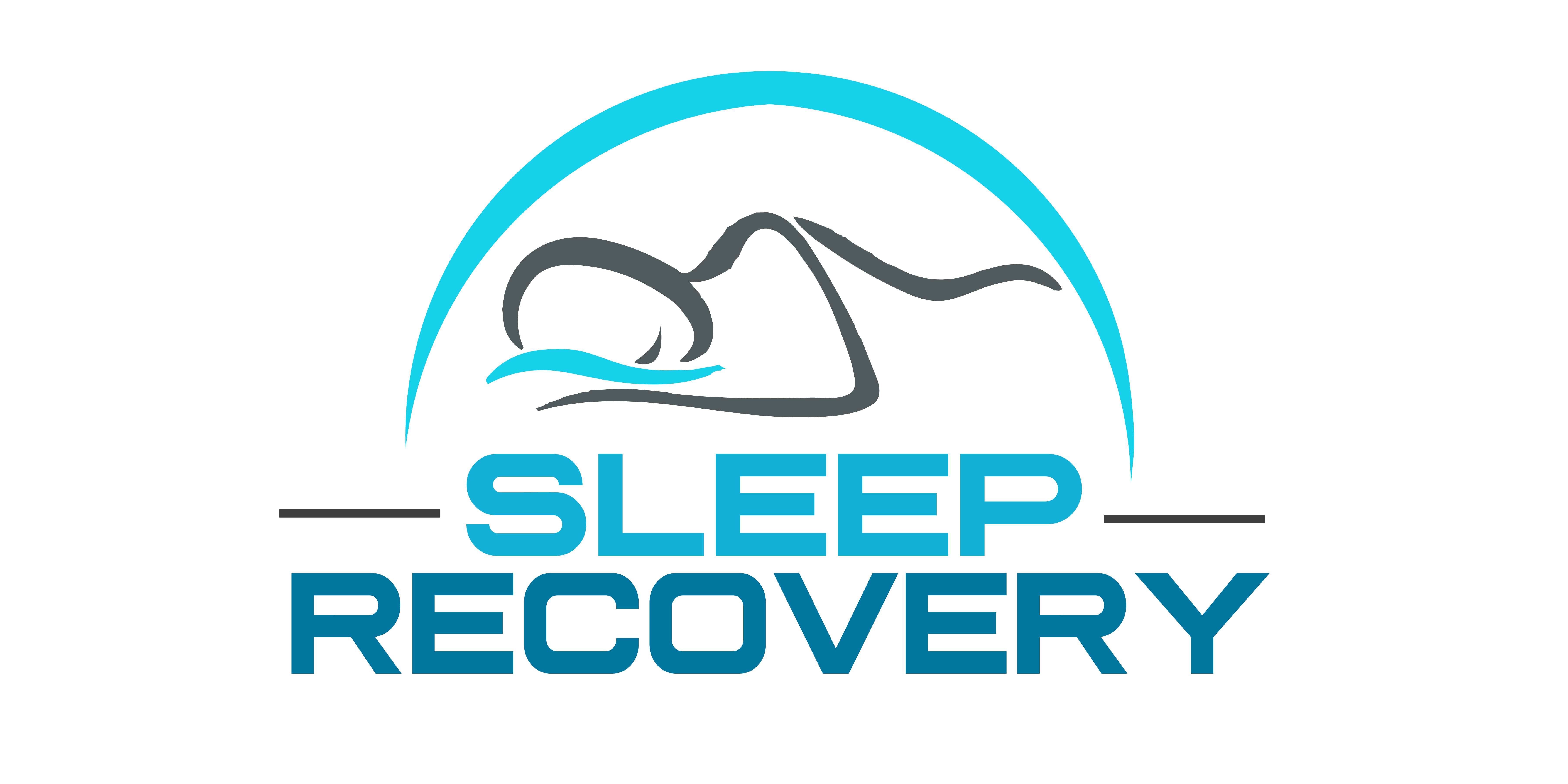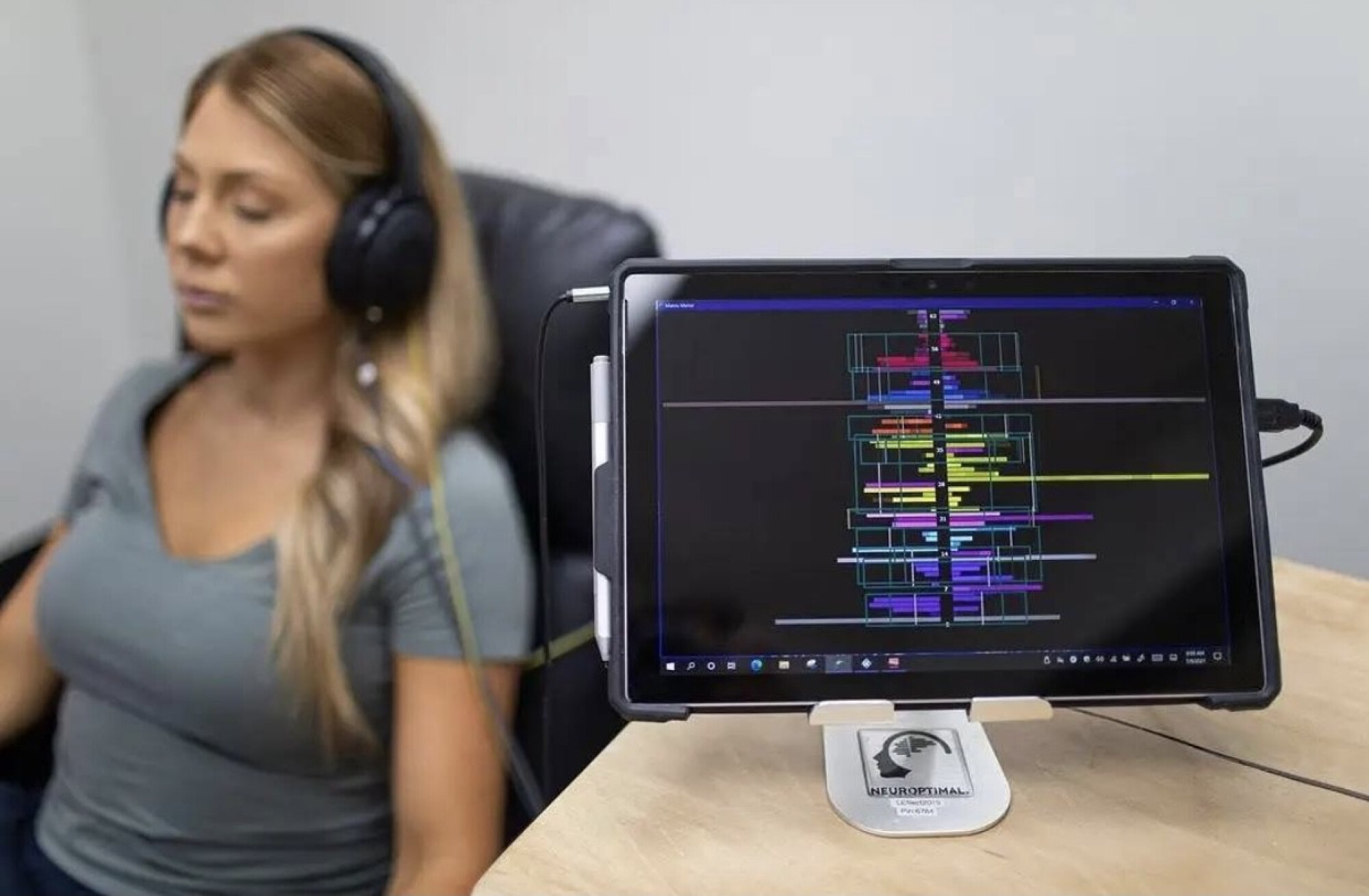Can AI Cure Insomnia? How Quantum Chips Could End Insomnia

While today’s AI models can’t tackle chronic insomnia, tomorrow’s quantum computing might revolutionize our understanding of sleep disorders. Sleep Recovery, Inc. stands at the frontier of this fascinating field, exploring fascinating connections between technology and our brain’s natural rhythms.
Most people view insomnia as nothing other than “trouble sleeping,” but the reality runs deeper. Our brains generate electrical patterns—brainwaves—that shift throughout the day and night. For those with chronic insomnia, these patterns often become disrupted in ways that medication alone can’t fix.
The problem affects millions—approximately 30% of adults struggle with insomnia symptoms, with nearly 10% experiencing chronic insomnia disorder. Behind these statistics lie countless nights of frustration, with people trying everything from prescription medications to elaborate bedtime routines, often finding only temporary relief.
The Brain as an Independent Intelligence
“We’ve discovered something remarkable about the brain,” explains David Mayen, founder and program director at Sleep Recovery, Inc. “It functions almost as an independent intelligence with its own agenda, separate from our conscious thinking. When we understand this relationship, we unlock new approaches to restoring natural sleep.”
This revolutionary concept views the brain as an organ we possess and a semi-autonomous system with a unique, separate intelligence. For centuries, medicine has treated the brain as something to be manipulated with drugs, electrical stimulation, or behavioral techniques. Sleep Recovery flips this paradigm.
“The breakthrough came when we stopped trying to force the brain to sleep and instead focused on giving it accurate information about its misaligned EEG state,” Mayen continues. “Think of it like holding up a mirror to the brain’s electrical activity.”
Sleep Recovery’s approach uses brainwave entrainment to help the brain recalibrate itself without forcing change through sleep restriction or medication. The technology detects specific brainwave patterns associated with insomnia and anxiety and provides real-time feedback that allows the brain to recognize and correct these patterns naturally.
Where Quantum Computing Enters the Picture
What ties this approach to quantum computing? The answer lies in how both systems process information.
Traditional computing—and traditional medicine—work in binary ways. A computer processes information as ones and zeros. Similarly, conventional medicine often takes a binary approach: you either have insomnia, or you don’t; you either take a sleeping pill or you remain awake.
Quantum computing, however, works with qubits that can exist in multiple states simultaneously. This holographic approach to computing mirrors how our brains systematically function—processing countless overlapping signals in a non-binary fashion. As quantum computers develop, they may provide unprecedented insights into these complex brainwave patterns.
“We’re just scratching the surface of understanding the brain’s electrical language,” says Dr. Jeffery Wilson, clinical director at Sleep Recovery. “Future quantum systems might map these patterns with such precision that we could identify exact disruptions for each individual and target interventions with incredible specificity.”
Indelible Results, Not Just Empty Promises
While the theoretical framework is fascinating, Chronic insomnia clients care about one thing: does it work?
The results speak volumes. Within just a few sessions, clients at this unique treatment clinic who suffered years of sleeplessness find themselves drifting off naturally. As one client shared, “After struggling with severe sleep issues for over a year, where I couldn’t fall asleep until 4-5 a.m., I noticed a significant difference from the very first session.”
Another client, Alex, who had been getting only “5 hours of sleep per week” before treatment, now reports “a consistent 6-7 hours every night.” This transformation borders on miraculous for someone previously surviving on less than an hour of sleep per night.
Sleep Recovery tracks these improvements objectively using wearable technology that monitors sleep duration, quality, and patterns. The data consistently shows more hours of sleep and improvements in sleep architecture—more time in deep sleep and REM cycles, the phases most critical for physical and mental restoration.
Reframing How We Understand Sleep
“The brain doesn’t work like a traditional computer,” Mayen notes. “It processes countless signals simultaneously, constantly adjusting to both external stimuli and internal patterns. Our technology helps the brain recognize its own disrupted patterns.”
This perspective turns conventional thinking upside down. Rather than fighting insomnia with external chemicals, Sleep Recovery provides the brain with information about itself—then steps back and lets the brain’s natural intelligence make corrections.
This approach recognizes something often overlooked: the brain wants to sleep. Sleep isn’t just a behavioral choice or a luxury—it’s a biological necessity our brains are programmed to pursue. When insomnia becomes chronic, it indicates not a lack of desire for sleep but a disruption in the brain’s natural ability to achieve it.
“Most insomnia treatments focus on sedating the brain or changing behavior,” explains Mayen. “We focus instead on restoring the brain’s natural sleep regulation systems. It’s like rebooting a frozen computer rather than forcing it to shut down.”
Beyond Sleep: Wider Implications
The implications extend beyond sleep. Anxiety, focus issues, and even certain mood disorders share connections with these same brainwave patterns. By addressing the underlying electrical activity, many clients experience improvements in multiple areas of life.
“I not only sleep better, but my anxiety has decreased significantly,” reports another client. “My academic performance, personal relationships, and overall well-being have all improved.”
This approach makes intuitive sense when we consider how interconnected sleep is with other aspects of health. Sleep disruption affects hormone regulation, immune function, cognitive performance, and emotional regulation. Sleep Recovery clients often find these other systems returning to balance by restoring healthy sleep patterns.
What’s particularly notable is how these improvements persist after the program ends. Unlike medication, which stops working when discontinued, Sleep Recovery’s approach creates lasting changes in the brain’s regulatory patterns.
“One of our clients returned three years after completing the program,” shares Mayen. “She was worried her insomnia might return during a particularly stressful period in her life. But her brain had maintained its healthy sleep patterns despite the stress. She didn’t need additional sessions—she just needed reassurance that her brain remembered how to sleep.”
The Future of Sleep Science
We may develop even more sophisticated tools for mapping and understanding brainwave patterns as quantum computing advances. Sleep Recovery positions itself at this intersection of neuroscience and emerging technology.
“We’re moving toward a future where we might analyze a person’s unique brainwave signature and create highly personalized interventions,” Dr. Wilson speculates. “Just as genomic medicine tailors treatments to an individual’s genetic code, we might tailor sleep interventions to an individual’s ‘brainwave code.'”
This advancement might seem far-fetched, but current technologies already show promising results. The key insight—treating the brain as an intelligent partner rather than a passive target—could transform approaches to numerous neurological and psychological conditions.
While mainstream medicine continues to focus primarily on sleep medications, pioneering practitioners like those at Sleep Recovery recognize that the future lies in working with—rather than against—the brain’s intrinsic intelligence.
For thousands suffering from chronic insomnia, this innovative approach offers hope where traditional methods have failed. By recognizing the brain’s semi-autonomous nature and providing it with the correct information,
And that’s something no pill has ever accomplished.
References:
- The Potential of Quantum Computing and Machine Learning to Advance Clinical Research and Change the Practice of Medicine.
- A primer for quantum computing and its applications to healthcare and biomedical research. https://academic.oup.com/jamia/article/31/8/1774/7700020
-
Can quantum computing crack the biggest challenges in health? https://www.nature.com/articles/s41591-024-03369-w


